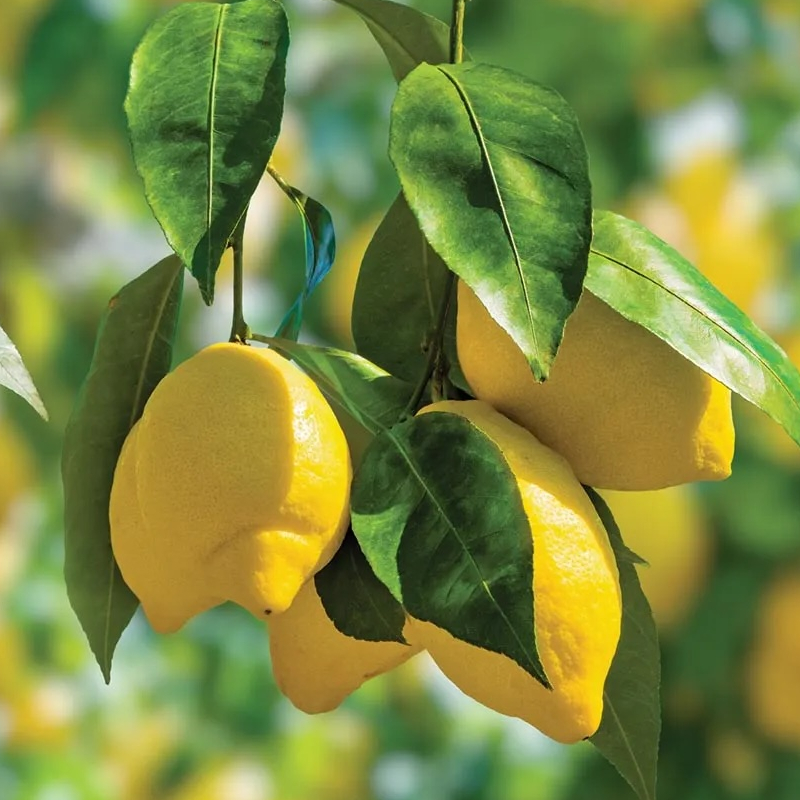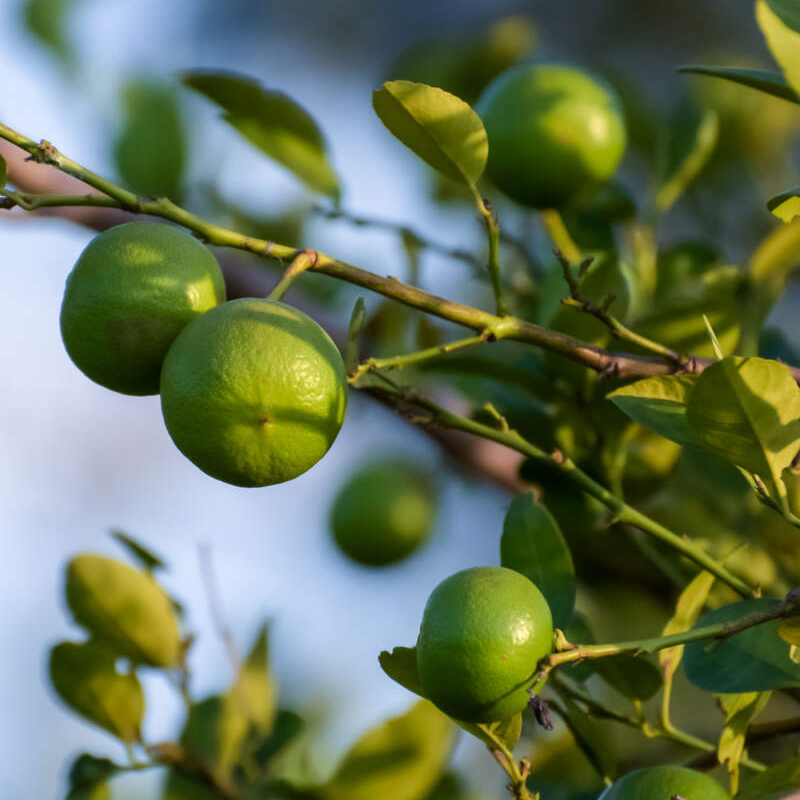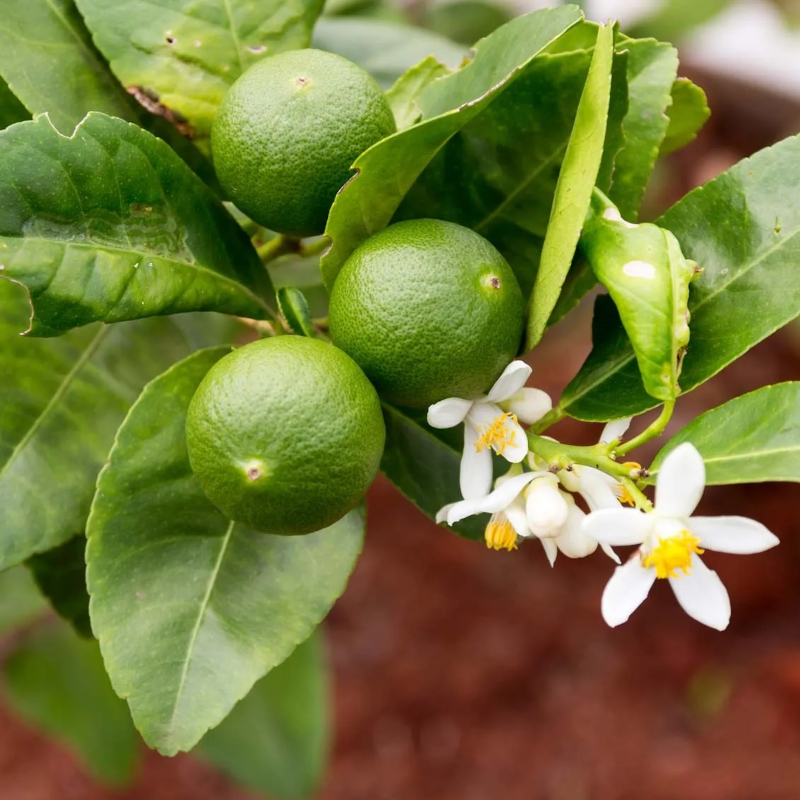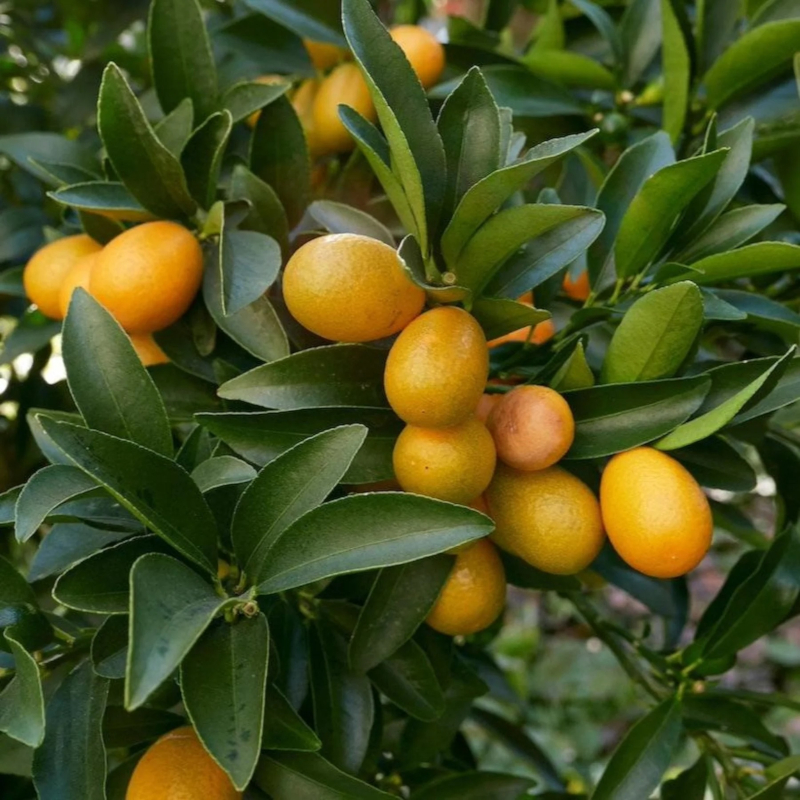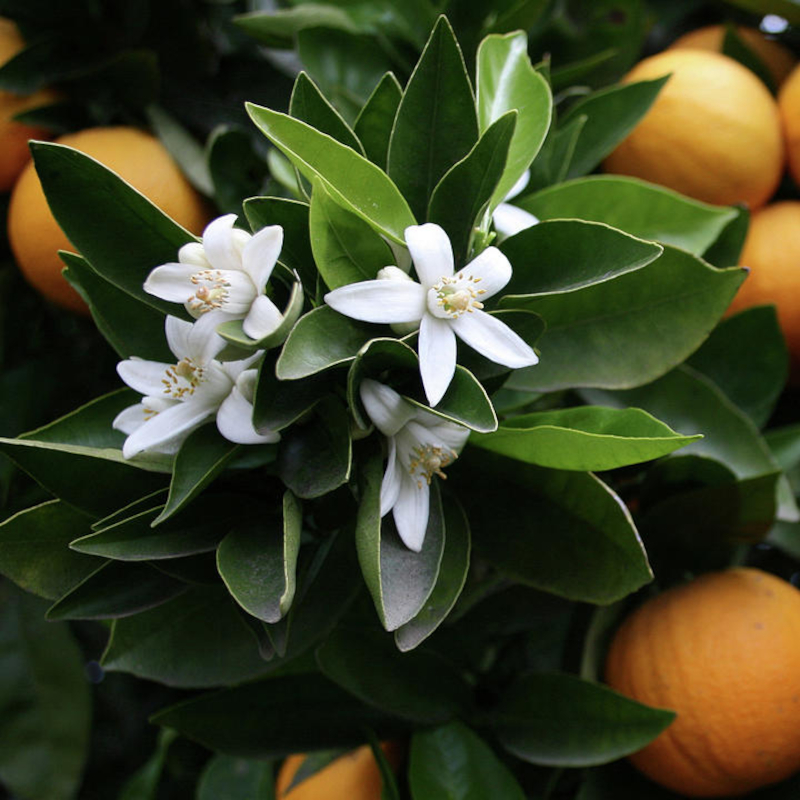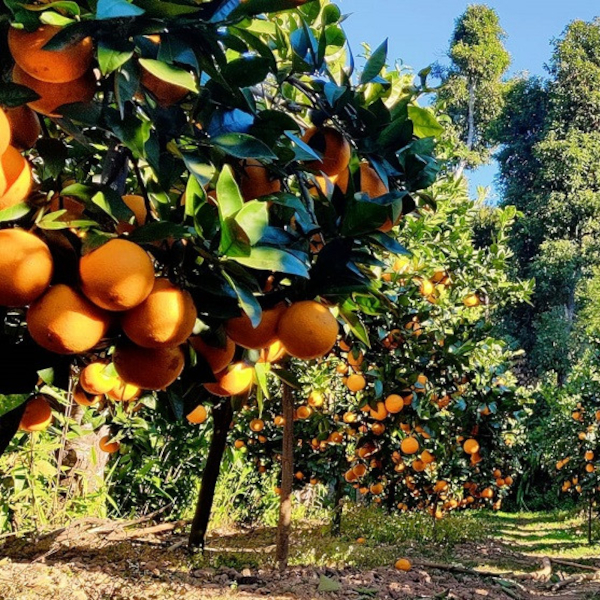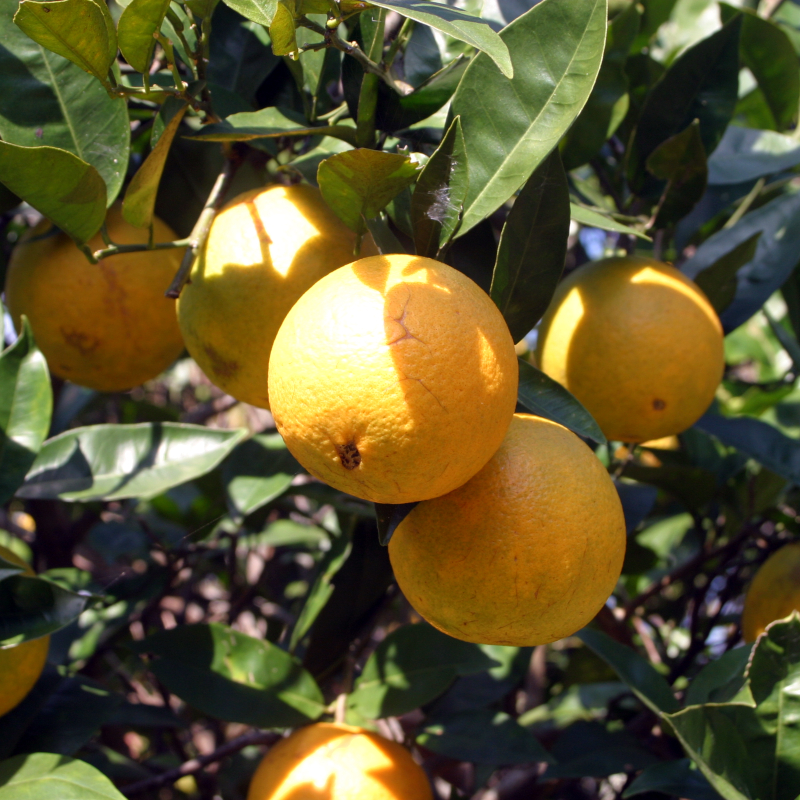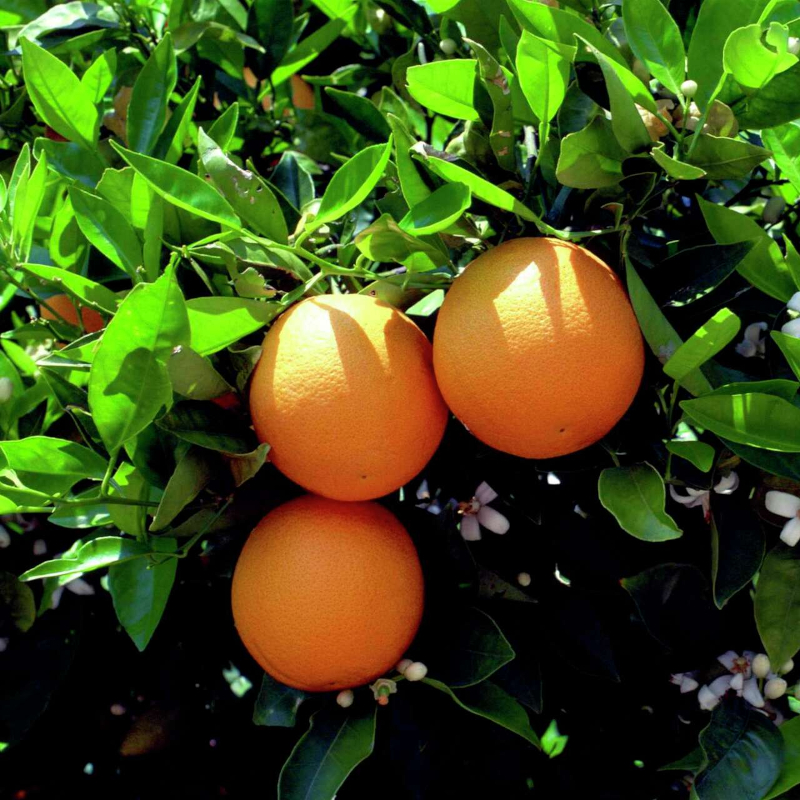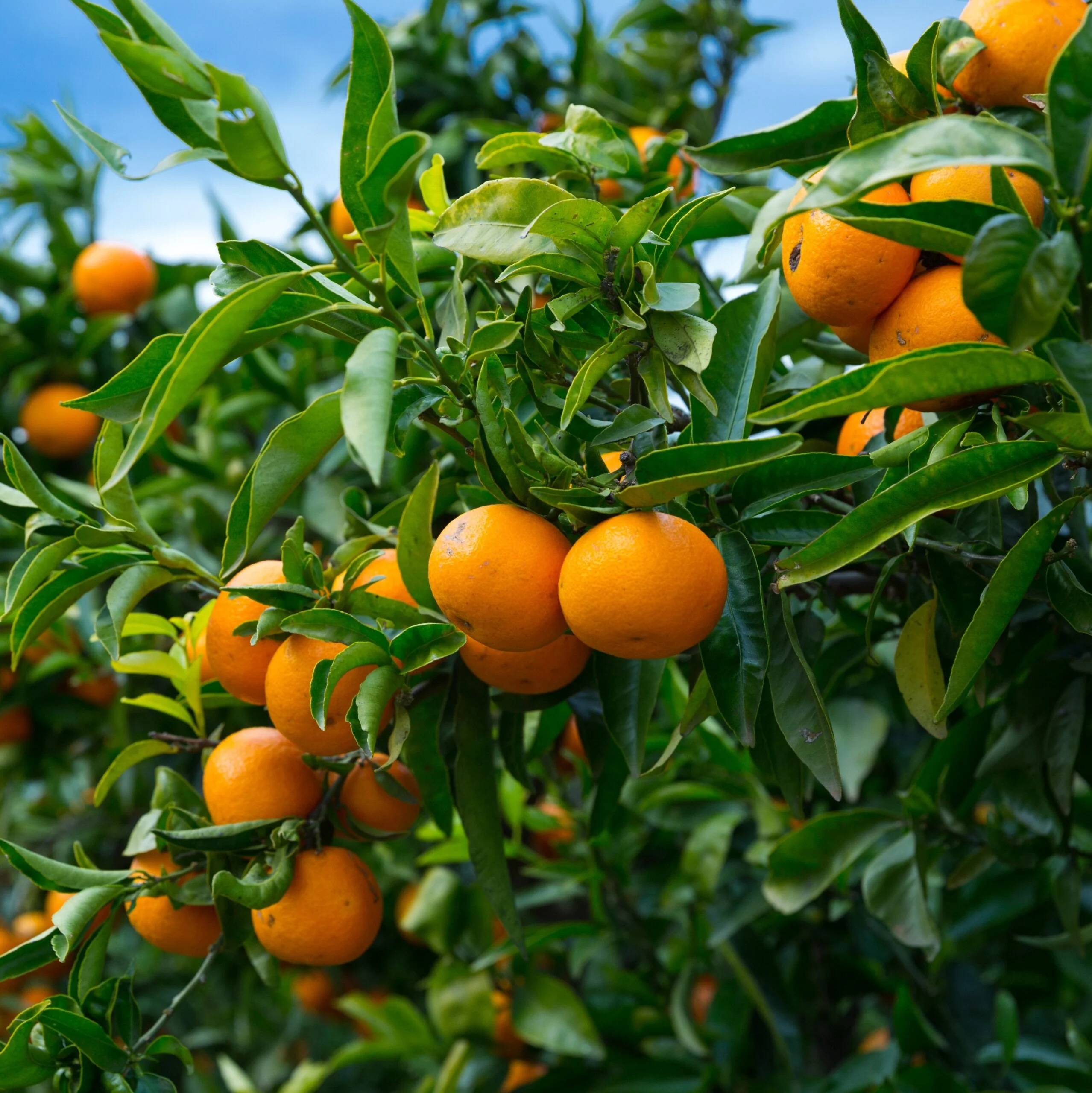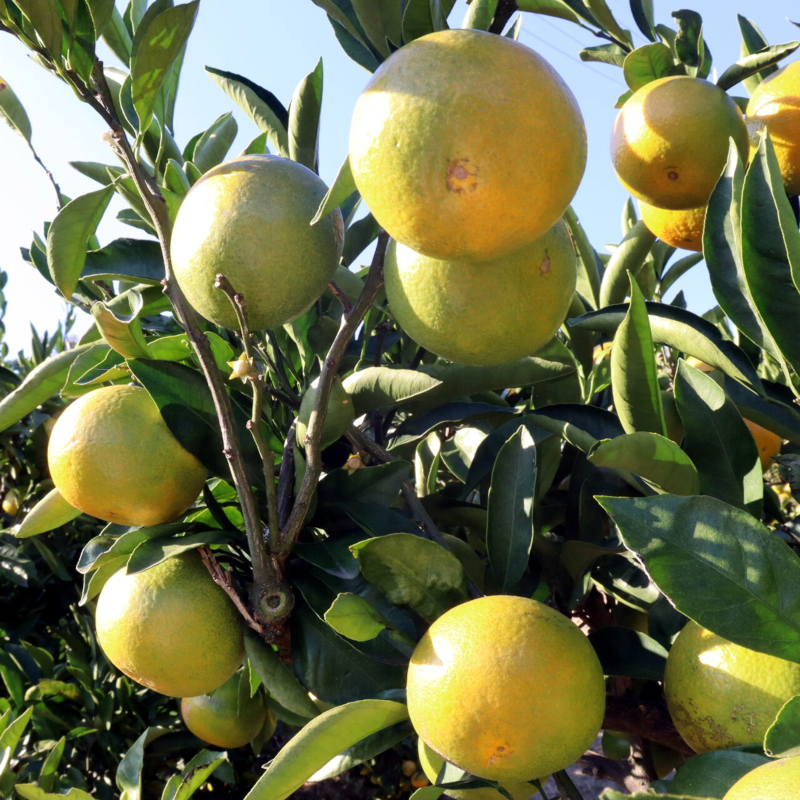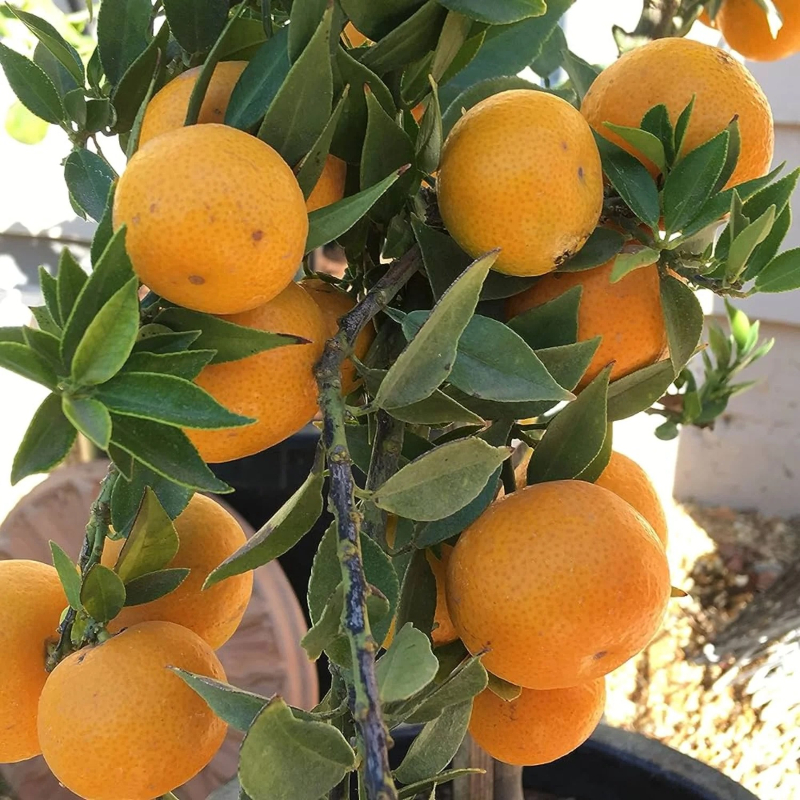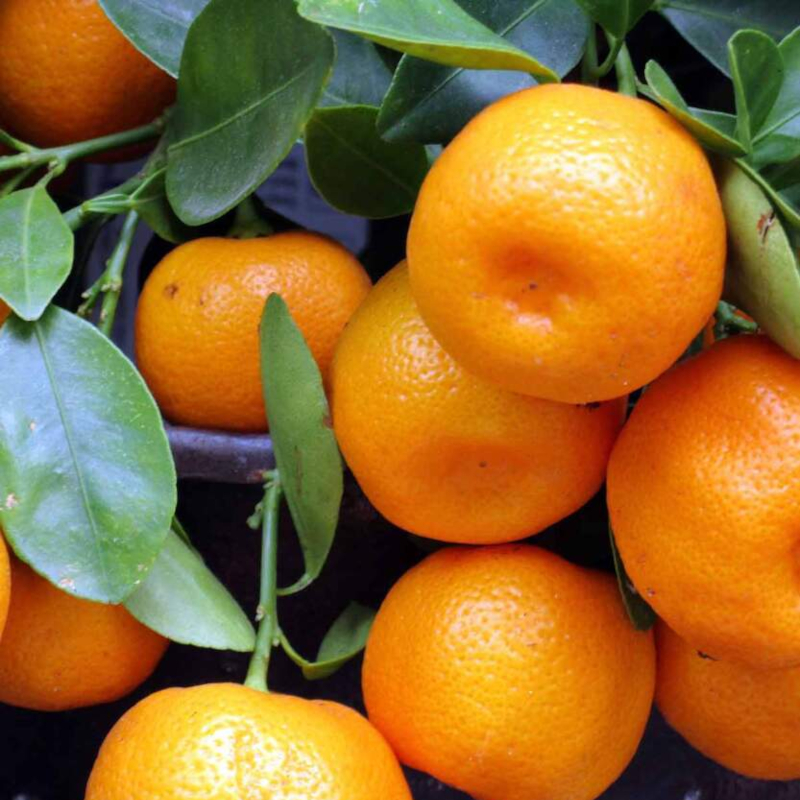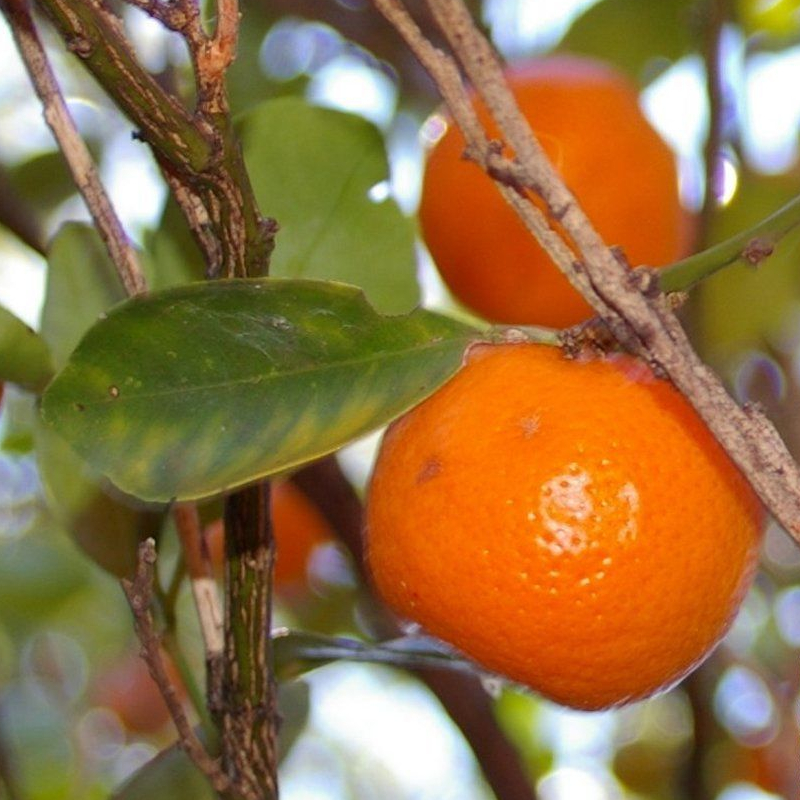Citrus

How To
Grow
Citrus Tree
Choose the right variety
Popular types: Lemon, Orange, Lime, Mandarin, Grapefruit.
Choose dwarf varieties for pots or small spaces.
Select a good location
Sunlight: Full sun, minimum 6–8 hours daily.
Soil: Well-draining, loamy or sandy soil.
pH: Slightly acidic (pH 6.0–7.0).
Planting
Time: Best planted in spring (after frost risk).
Spacing: 12–25 feet apart for standard trees; 6–10 feet for dwarf trees.
Hole: Dig twice as wide as the root ball, same depth.
Planting: Place tree at same level as in pot, backfill with soil, and water deeply.
Watering
Keep soil consistently moist but not soggy.
Deep watering once a week during dry periods.
Avoid overwatering – citrus roots dislike waterlogging.
Fertilizing
Use a balanced citrus fertilizer (with nitrogen, phosphorus, potassium, and micronutrients).
Feed:
Mature trees: 3–4 times a year.
Young trees: every 6–8 weeks.
Pruning
Remove dead or crossing branches.
Keep center open to light and airflow.
Prune in late winter or early spring.
Pollination
Most citrus trees are self-pollinating, but bees help improve fruit set.
Growing multiple varieties may enhance pollination and yield.
Pest & disease management
Watch for: aphids, scale insects, citrus leaf miner, spider mites.
Use neem oil or insecticidal soap if needed.
Root rot from poor drainage is common—ensure good soil.
Harvesting
Citrus does not ripen off the tree.
Taste-test to check readiness.
Mature fruit is firm, full-colored, and fragrant.
Health Benefits of Lemon
- Strengthens the immune system.
- Helps in collagen production for skin and joints.
- Stimulates digestive juices and bile.
- Lemon water may relieve bloating and indigestion.
- Contains flavonoids (like hesperidin and eriocitrin) that fight free radicals.
- High citric acid helps prevent calcium stone formation.
- May promote fullness when added to water, supporting hydration and metabolism.
- Antioxidants and vitamin C help reduce skin aging and acne.
- Though acidic in taste, lemons are alkalizing in the body.
- Lemon juice has mild antimicrobial properties.
| Nutrient | Amount / Raw Lemon (100Gr) |
| Calories | 29 kcal |
| Protein | 1.1 g |
| Total Fat | 0.3 g |
| Carbohydrates | 9.3 g |
| – Sugars | 2.5 g |
| – Dietary Fiber | 2.8 g |
| Vitamin C | 53 mg (88% DV) |
| Vitamin B6 | 0.08 mg (6% DV) |
| Potassium | 138 mg (4% DV) |
| Calcium | 26 mg (2% DV) |
| Magnesium | 8 mg (2% DV) |
| Folate (B9) | 11 µg (3% DV) |
| • DV = Daily Value, based on a 2,000-calorie diet. | |
Various Uses of Citrus Fruits
Fresh Eating

Oranges, mandarins, and pomelos are commonly peeled and eaten fresh
Juices & Drinks

Lemonade, orange juice, lime soda, and cocktails (e.g., mojitos, margaritas)
Cooking & Baking
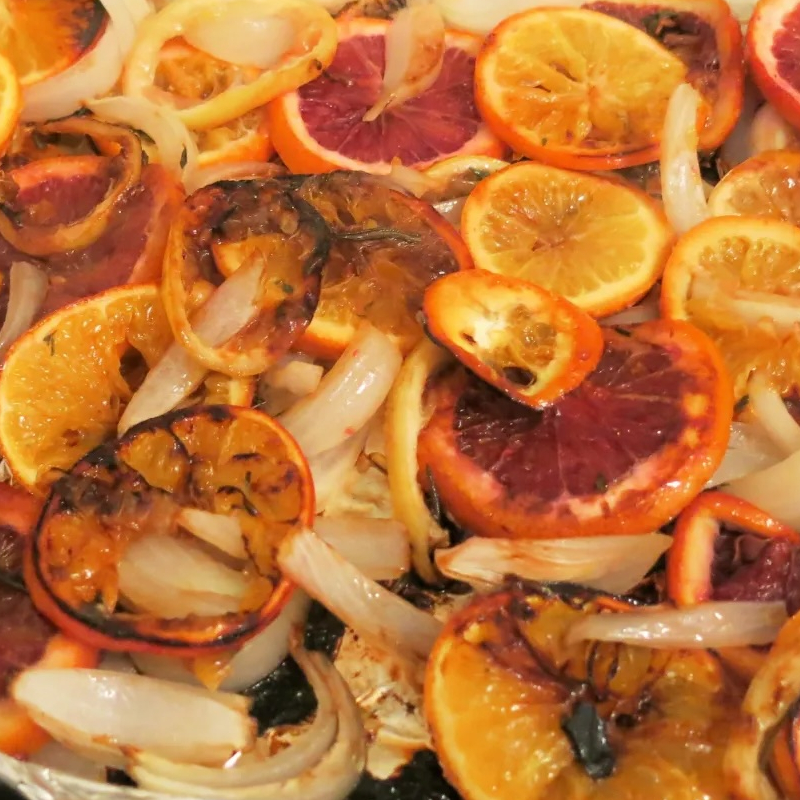
Marinades, dressings, sauces (e.g., lemon butter, orange glaze)
Baked goods: lemon cake, key lime pie, orange zest muffins
Preservation

Marmalade, citrus chutney, candied peels, and pickled lemons
Zest & Rind
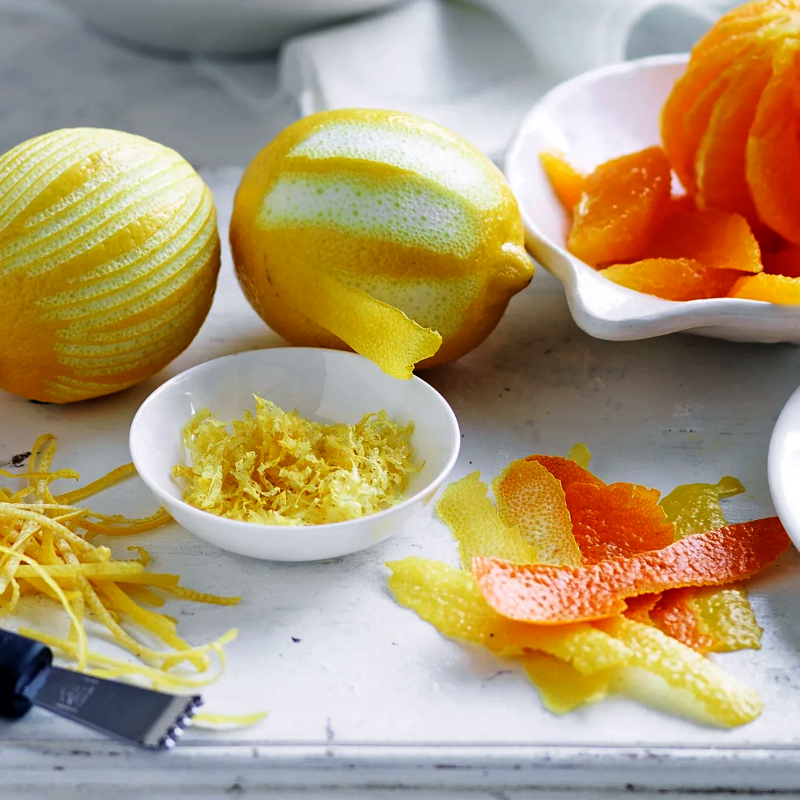
Grated zest used for aroma and flavor in dishes and desserts
Lemon or lime slices in detox water or hot tea for flavor and health benefits
Uses Of
Tree Trunk
Firewood
Burns hot and gives off a pleasant citrus aroma.
Suitable for indoor fireplaces and outdoor cooking fires.
Dried citrus wood makes good kindling.
Woodcraft & Carving
Dense and hard wood is usable for small woodcraft projects, like:
– Utensils
– Decorative items
– Walking sticks
– Tool handles
Unique grain makes it useful in artisan woodworking for accents or rustic décor.
Smoking Wood for Cooking
Excellent for smoking meats and vegetables (especially orange or lemon wood).
Adds a mild, sweet, citrusy flavor to grilled foods.
Mulch or compost
Chipped citrus wood can be used as mulch.
Bark and small branches can be composted after drying.


